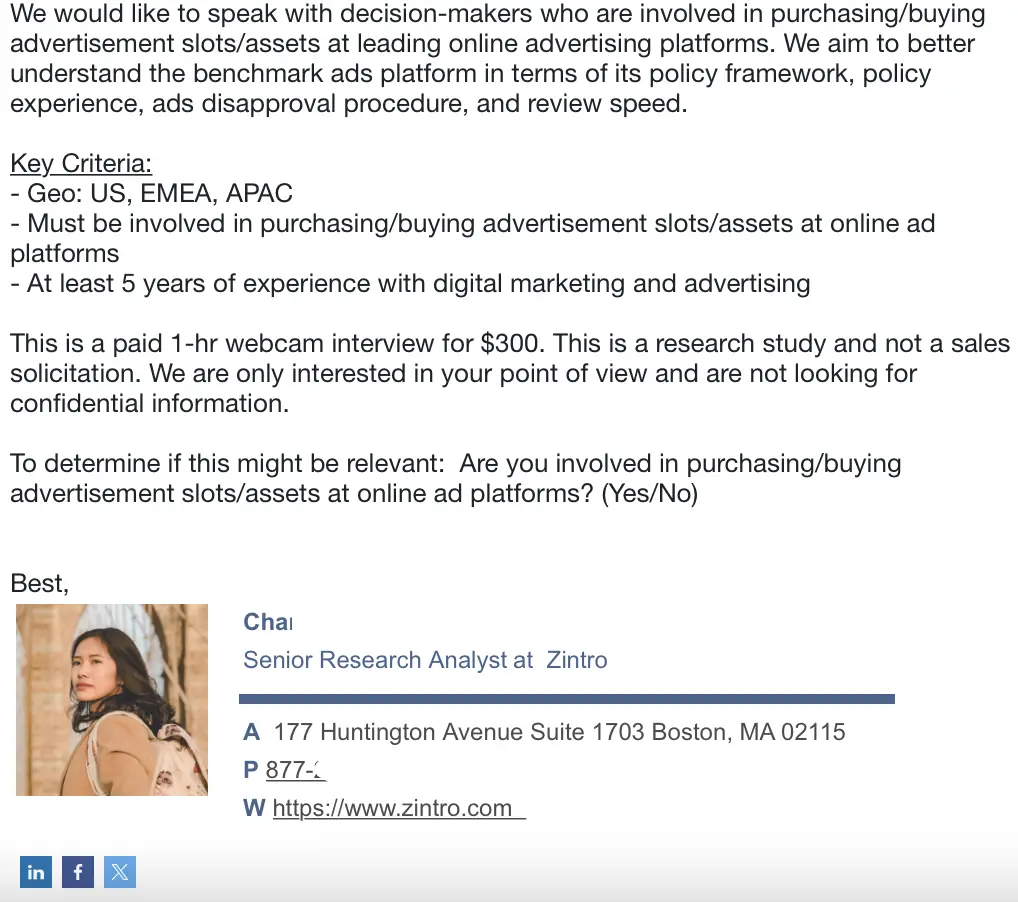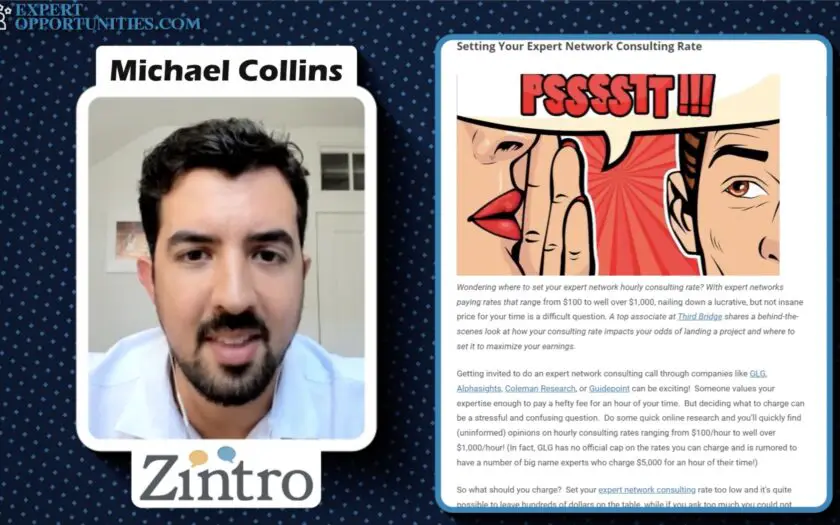Maximizing Expert Network Earnings: Industry Executive Reveals Best Tactics
In the rapidly evolving landscape of expert networks, standing out is both an art and a science. Michael Collins, Chief Revenue Officer at Zintro, is a seasoned veteran in this space, offering invaluable insights for consultants eager to optimize their engagement. Founded in 2007, Zintro disrupted the market research model, offering high-quality participants with unmatched flexibility at a fraction of the cost. Today, with a clientele that includes PE/VC firms, investment managers, and Global 1000 enterprises, Zintro connects teams with specialized respondents ranging from industry specialists to ex-company employees. In a candid interview with Expert Opportunities, Collins delves deep into the intricacies of expert networks, not just at Zintro but across the industry.
Optimize Your LinkedIn Profile for Maximum Visibility
LinkedIn is a critical tool in the expert network arena. “The majority of expert recruiting across all expert networks comes from LinkedIn,” Collins notes. But it’s more than just having a presence; it’s about crafting a LinkedIn profile that captures attention.
“Experts should strike a balance between having a keyword-rich profile, well organized, so that they come up on the search results with a perception that if their profile is too overburdened with information they look have a lack of sophistication from the client perspective.” advises Collins. This ensures your profile surfaces in searches without appearing desperate. Remember, while keywords are essential, so is the overall perception. Profiles from large, recognizable organizations often carry more weight, signaling credibility and expertise.
Winning More Projects

In the competitive world of expert networks, responsiveness can set you apart. “The vast majority of all responses to an expert network request come in the first few days,” Collins shares. But it’s not just about being quick; it’s about being effective, especially when it comes to screening questionnaires.
Collins candidly admits, “Screeners are very painful but very important.” These questionnaires offer a chance to showcase depth and willingness to engage. However, consultants often grapple with the dilemma of investing time in detailed responses versus the potential of not landing the project. Collins suggests thinking of it as “putting your best foot forward like a cover letter on a resume.” Provide substantive, specific answers, but remember to strike a balance. Over-sharing can be as detrimental as under-sharing.
The Rate ‘Break Point’ and Maximizing Earnings
Compensation is often the elephant in the room. “The industry average is between $200 and $500 for a 30 to 60-minute conversation,” Collins reveals. But where does one draw the line? At what point does a higher hourly rate become a deterrent rather than an attraction?
One of the most pressing questions experts grapple with is identifying the ‘break point’ for their rates. At what hourly rate does the balance tip from being an attractive expert to being deemed too expensive? While Collins mentions the industry averages, he also hints at the variability, with factors like seniority and organizational size playing a role.
Collins emphasizes the importance of direct communication with expert networks regarding compensation. “Definitely having a direct conversation with the PM or their direct contact,” he advises, can help experts gauge what’s possible for a particular project or client.
Understanding the broader industry dynamics is crucial. While each expert network, including Zintro, has its own pricing structure and client base, there are overarching trends in the industry that can influence compensation. For instance, larger, more established firms like Guidepoint Global and Alphasights often cater to clients with deeper pockets, potentially leading to less price sensitivity. Conversely, even some big names like GLG are known for their frugal approach and can be tough negotiators when it comes to rates. Being aware of these dynamics and the reputation of each network can help experts set competitive rates that align with the expectations of both the network and its clients
In Conclusion
Expert networks, whether it’s Zintro or any other platform, offer a unique avenue for professionals to showcase their expertise. Michael Collins’ insights serve as a roadmap for consultants to navigate this space effectively. From optimizing profiles and understanding compensation dynamics to effectively handling screening questionnaires, the journey is about striking the right balance, building trust, and ensuring you present your expertise in the best possible light.

